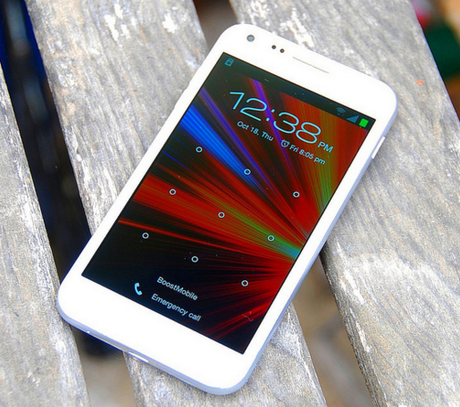 This post is sponsored by Samsung Business. All thoughts and opinions are my own.
This post is sponsored by Samsung Business. All thoughts and opinions are my own.
It’s safe to say that it would be rough existing in today’s society without communicative technology. We need our devices and our data in order to work, to collaborate, and to connect—now more than ever. The Internet of Things (IoT) is making that happen, sharing data between our physical and digital worlds. The implications of that data are far-reaching and can be both transformative for marketers and empowering for consumers. So where is the IoT sweet spot now? You may want to look down because it’s probably in your pocket or your purse.
That’s right—sensor data is going mobile, and there’s a lot to talk about.
The IoT and Sensors: What You Really Need to Know
The IoT has been a force to reckon with since its advent, but recent sensor advancements have made its relevance in our technological culture undeniable. In turn, companies and marketers are noticing. In March of this year, Altimeter Research released a report titled Customer Experience in the Internet of Things: Five Ways Brands Can Use Sensors to Build Better Customer Relationships. The widely cited report noted the following key benefits to the IoT/sensor partnership:
- Context Based Rewards. Customers can receive timely coupons or offers based on the context of their mobile usage and sensor data.
- Customers are provided utility of some sort, such as convenient payment methods or additional security features for online mobile transactions.
- Innovation. Sensor monitoring can lead to better products and services, as companies are able to use sensors to gather feedback and adjust to meet consumer need.
- Improved Decision Making. Customers can get the most relevant information at exactly the right time when sensor data is optimally employed.
- Service. Customers can receive better service because, when sensor data is gathered and reviewed in real time, consumer issues can be met proactively (or perhaps one day avoided altogether).
The Value of Sensors in a Mobile World
When was the last time you left home without your cell phone? Did you hyperventilate and turn around to go back for it? Jokes aside, the fact is that we are rarely without an internet-ready mobile device—in fact, Smart Insights reports that people access the web more on their mobile devices than they do from desktop locations (51 percent of the time on mobile compared to 41 percent of the time on desktop, to be exact). This truth, coupled with the mass amount of sensor data circulating within IoT, makes sensors and mobility a match made in user-friendly heaven.
The value of sensors in a mobile world is immense, and possibilities abound for increased customer experiences because of their growing relationship. Picture this: You normally stop for coffee around the same time every morning, but one day you’re out of town. Instead of having to search for the nearest coffee shop, your phone messages you the location of your favorite java chain without prompting. Perhaps you’ve recently searched for new shoes, so your device updates you when a store in your radius has that pair on sale.
The above examples may seem far off, but this technology is closer than you think. In some spaces, it’s already here. BioBeats, a startup company in the digital health sector, has created a suite of products that measure your biometrics and offers suggestions to help you manage stress and improve wellness. The sensors can detect your activity level and mood. This up and coming company is one of many diving into the pool of opportunity present when sensors, IoT, and mobility merge.
Considerations for Marketers
With the influx of personal sensor data comes the influx of additional responsibility to use it wisely. If customers feel like boundaries are being crossed, they’re unlikely to respond to even the most well-coordinated marketing effort. To achieve the best results, Forbes recommends marketers downplay sensor devices as reach channels for acquiring customers and instead “think of them as relationship channels, offering utility and services that deepen the engagement with your existing customers.”
In addition, marketers should consider revamping those all-important data use policies. Besides improving transparency in general, they should make consumers aware of how personal data will be used in certain contexts. After all, nobody likes to feel blindsided.
In sum, sensor data is incredibly promising for both consumers and marketers. It gives businesses the opportunity to better reach and engage their customers, and those customers get better, faster and more relevant content. All that from a mobile device? Yes, and thanks to IoT and sensor data, it’s not only possible—it’s happening.
Additional Resources on this Topic:
Should Internet of Things Mean Anything to Your Business?
IoT Sensor Data Leads to Industry Innovations
Make Your Business Thrive with Internet of Things
For more content like this, follow Samsung Business on Insights, Twitter, LinkedIn , YouTube and SlideShare.
photo credit: Samsung Galaxy S II via photopin (license)
A version of this post was first published on MillennialCEO.

